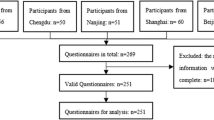Abstract
This paper describes the development of a Chinese Acupuncture Expert System (CAES) that will assist the learning and practice of medical acupuncture. This was the development of a Chinese Acupuncture Expert System which incorporated eight functional modules. These modules were 1) Add Patient Record subsystem; 2) Diagnosis subsystem ; 3) Acupuncture Prescription subsystem ; 4) Needle Insertion Position Animation subsystem ; 5) Acupuncture Points Usage Statistic subsystem ; 6) History Query subsystem; 7) Acupuncture Points Query subsystem and 8) Diagnosis Remarks and Diagnosis Record Save subsystem. Two databases were built—Patient Record database and Diagnosis (Acupuncture) Knowledge database. All the Traditional Chinese Medicine (TCM) knowledge and acupuncture treatment prescriptions were extracted from officially used TCM textbooks and received guidiance and expert advice from two acupuncturists working in this project. A Chinese Acupuncture Expert System (CAES) was built, which after the input from users of any Chinese disease symptoms and signs, it can provide a list of related TCM syndrome diagnoses based on the patients’ disease symptoms and signs, and at the same time it can offer advice of the appropriate Chinese acupuncture treatment to the users. CAES also provided text descriptions and acupuncture animations showing the acupoint locations and the direction and depth of the needle insertion technique. Therefore users can easily learn acupuncture and practice it. This new acupuncture expert system will hopefully provide an easy way for users to learn and practice Chinese Acupuncture and establish its usefulness after it was fully evaluated.



Similar content being viewed by others
References
National Institutes of Health Consensus Panel. Acupuncture: National Institutes of Health Consensus Development Conference Statement. National Institutes of Health Web site. Accessed at http://consensus.nih.gov/1997/1997acupuncture107html.htm on June 22, 2007
Y. Omura. Acupuncture Medicine: Its Historical and Clinical Background, (Mineola, New York: Dover Publications (2003) 288
A. Norheim. Adverse effects of acupuncture: a study of the literature for the years 1981-1994, Journal of Alternative and Complementary Medicine 2 (1996) (2): 291–297
F.W.S. Wong, K.S. Leung, Y.T. So. The recent development and evaluation of a medical expert system (ABVAB), International Journal of Bio-Medical Computing 25 (1990) (2–3): 223–229
K.S. Leung, W.S. Wong, and W. Lam. The Development of an Expert Computer System on Medical Consultation, International Journal of Bio-Medical Computing, Vol.23, No.3, pp.265–278, Dec., 1988
K.S. Leung and M.H. Wong. Fuzzy Concepts in an Object Oriented Expert System Shell, International Journal of Intelligent Systems 7 (1992) (2): 171-192
Textbook of Acupuncture and moxibution, Science and Technology Publication Company, Shanghai China. (1985)
K.S. Leung, Y.T. So, A.K.L. Leung, and W.S. Wong. A Fuzzy Expert System Shell: From Minicomputer to PC, Artificial Intelligence in Medicine 4 (1992) (1):.75–85
P. Heng, T. Wong, et al. Intelligent inferencing and haptic simulation for Chinese acupuncture learning and training, IEEE Transactions on Information Technology in Biomedicine 10 (2006) (1): 28–41
Acknowledgement
We would like to acknowledge Mr. Ho Yin Cheung and Mr. Man Kit Tse in the participating into this project by building a few accessory modules into the system. We would also thank Mr. Yongming Xie, Ms. Lian Bi and Ms. Hongxia Li for their professional advice on Chinese Medicine and provide us the knowledge of the locations of acupuncture points as well as to advise us of acupuncture treatment towards various diseases.
Conflict of Interest
Nil
Author information
Authors and Affiliations
Corresponding author
Rights and permissions
About this article
Cite this article
Lam, C.F.D., Leung, K.S., Heng, P.A. et al. Chinese Acupuncture Expert System (CAES)—A Useful Tool to Practice and Learn Medical Acupuncture. J Med Syst 36, 1883–1890 (2012). https://doi.org/10.1007/s10916-010-9647-0
Received:
Accepted:
Published:
Issue Date:
DOI: https://doi.org/10.1007/s10916-010-9647-0




